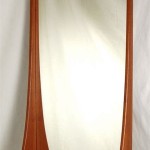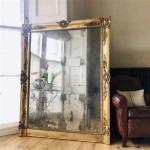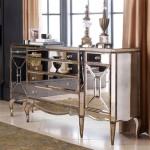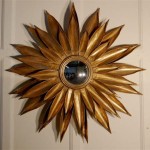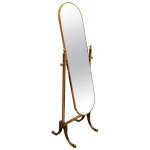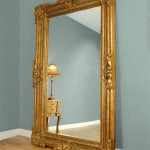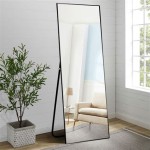DIY Mirror Table Runner
A mirrored table runner offers a touch of elegance and glamour to any dining setting. Reflecting light and surrounding decor, it creates a sense of depth and visual interest. Constructing a DIY mirror table runner is surprisingly straightforward, offering a cost-effective alternative to purchasing a pre-made version. This allows for customization in terms of size, shape, and mirror finish, perfectly complementing existing decor.
Several materials are required for this project. The primary component is mirrored tiles. These are readily available at home improvement stores and come in various sizes and finishes. Consider the overall aesthetic when selecting the tile size and shape; smaller tiles provide a mosaic effect, while larger tiles contribute to a more streamlined appearance. Adhesive is essential for securing the tiles to the runner's base. Specialized mirror adhesive provides the strongest bond and prevents damage to the reflective surface. The base material can be a pre-purchased table runner, a length of fabric, or a piece of wood, depending on the desired effect and durability.
Choosing the right base material is crucial. Fabric runners offer flexibility and a softer look, suitable for casual settings. They can be easily draped and stored. Wood runners, on the other hand, provide a more substantial and formal feel. Their rigidity ensures the tiles remain aligned and prevents warping over time. Pre-purchased runners offer a convenient starting point, eliminating the need to cut and finish the base material.
Before beginning assembly, carefully measure the table on which the runner will be placed. This determines the desired length and width of the finished piece. Account for any overhang at the table ends. Once measurements are taken, cut the chosen base material to size. If using fabric, finishing the edges is recommended to prevent fraying. This can be achieved through hemming, serging, or using fabric glue.
Preparing the surface area is vital for successful adhesion. Ensure the base material is clean and dry. If using wood, lightly sand the surface to create a better bonding surface for the adhesive. For fabric, ensuring a smooth, wrinkle-free surface is essential. Laying the fabric flat and ironing if necessary will prevent uneven tile placement.
The placement of the mirrored tiles depends on the desired pattern. For a straightforward linear arrangement, begin placing tiles along the center of the runner, working outwards. Ensure consistent spacing between tiles for a professional finish. Consider using spacers, readily available at tile stores, to maintain uniform gaps. For more intricate patterns, planning the layout beforehand is recommended. This can involve sketching the design on paper or creating a template using cardboard.
Applying the adhesive requires precision and care. Follow the manufacturer's instructions for the specific adhesive being used. Generally, a thin, even layer of adhesive is applied to the back of each tile. Avoid using excessive adhesive, as this can seep out from under the tiles and mar the mirrored surface. Once the adhesive is applied, carefully position the tile on the base material, applying gentle pressure to ensure a secure bond. Continue this process, adding tiles one by one, until the desired pattern is complete.
Allowing adequate drying time is critical. Refer to the adhesive manufacturer's instructions for the recommended drying period. Avoid disturbing the runner during this time to prevent shifting or dislodging of the tiles. Once the adhesive is fully cured, carefully inspect the runner for any loose tiles or excess adhesive. Carefully remove any excess adhesive with a scraper or a damp cloth, taking care not to scratch the mirror surface.
Maintaining the mirror table runner is straightforward. Dust regularly with a soft, dry cloth. Avoid using abrasive cleaners or harsh chemicals, as these can damage the mirrored surface. For stubborn smudges or fingerprints, a gentle glass cleaner can be used sparingly. Spray the cleaner onto a cloth rather than directly onto the mirror surface to prevent streaking and damage to the adhesive.
Customizing the DIY mirror table runner offers a unique and personalized touch. Consider adding embellishments such as beads, crystals, or decorative trim along the edges. These additions can further enhance the runner's aesthetic and tie it in with existing decor. Experimenting with different tile shapes, sizes, and finishes allows for endless creative possibilities. Consider using antique mirrored tiles for a vintage look, or colored mirrored tiles for a modern twist.
Safety precautions should be observed throughout the construction process. Wear gloves to protect hands from sharp tile edges and adhesive. Work in a well-ventilated area to minimize exposure to adhesive fumes. If cutting glass tiles, use appropriate safety goggles to protect eyes from shards. Dispose of broken glass or sharp tile fragments responsibly.

Diy Dollar Tree Foldable Mirror Table Runner Home Decor

Diy Mirror Wedding Table Decoration Runner Centerpieces

Mirror Table Runner Pretty Wedding Runners

Diy Dollar Tree Foldable Mirror Table Runner Home Decor Dinning

Diy Mirror Table Runner Dollar Home

Mirror As A Table Runner Centerpieces Tablescapes Settings

Diy Dollar Tree Mirrored Table Runner Dining Home Decor

Stylish Mirrored Table Runner

Diy Dollar Tree Glam Mirror Table Runner Tray

Diy Dollar Tree Glam Mirror Table Runner Tray

